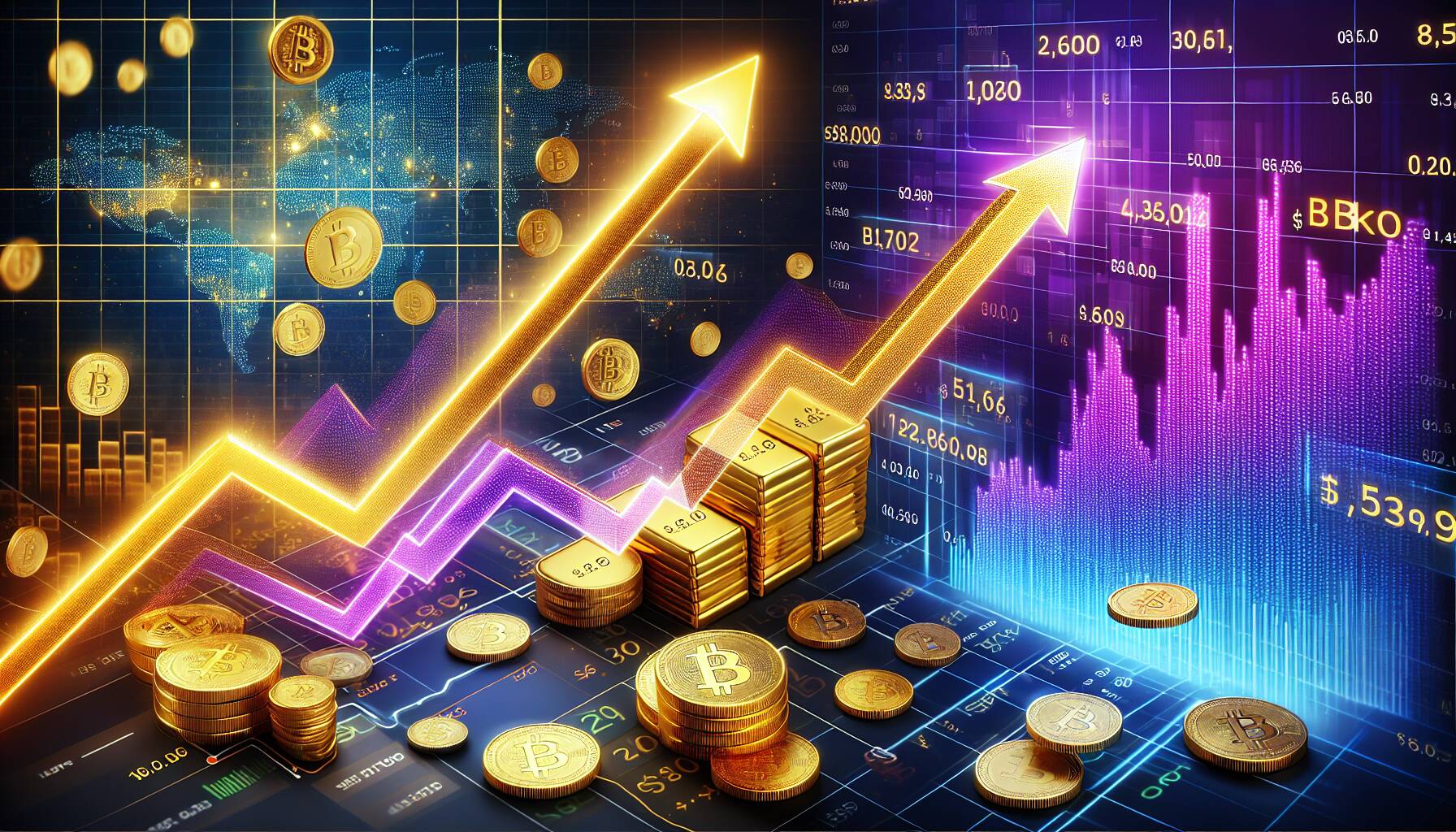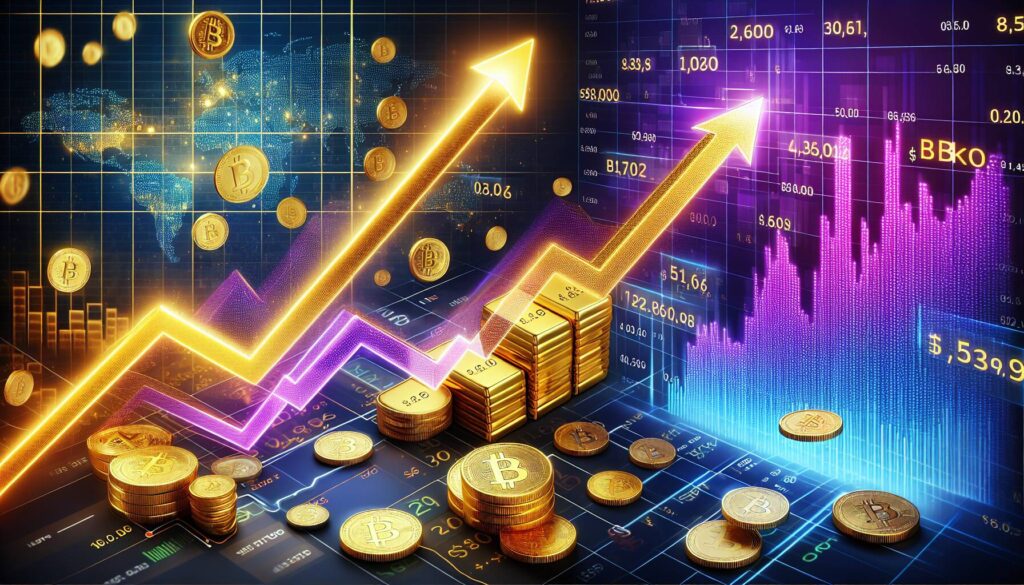The cryptocurrency landscape is once again intertwined with traditional assets as gold makes headlines with its remarkable ascent. On Monday, the price of gold surged by 1%, setting a new record high of $3,721 and marking an impressive 43% gain for the year 2025. This jump comes just after bitcoin (BTC), often touted as a digital counterpart to gold, experienced a decline of 3%, dropping its value to $112,000 and reflecting a year-to-date gain of only 17%. Such timing raises questions about whether investors are shifting profits from cryptocurrency to the more stable realm of gold.
This is a notable divergence since gold and bitcoin typically do not move in tandem, although they occasionally show co-movements with a slight delay.
Furthermore, silver is also capturing attention, rising by 1.5% to nearly $44, which positions it at its third-highest level since 1975 and reflects a staggering 50% increase this year. These movements can be linked to broader economic indicators; following the Federal Reserve’s decision to cut interest rates by 25 basis points on September 17, both gold and the S&P 500 have gained approximately 1%. Conversely, U.S. treasury yields have increased, with the 10-year yield climbing to 4.125% and the 30-year reaching 4.7%, while the strengthening dollar, indicated by a 1% rise in the DXY index to 97.5, typically pressures risk assets like bitcoin.
As we observe these shifting dynamics in the markets, it becomes increasingly clear that the interplay between traditional metals and digital currencies continues to evolve.

Gold and Silver Market Insights
Key points regarding gold, silver, and their market dynamics:
- Gold Records Highs: Gold rose by 1% to reach a price of $3,721, marking a 43% increase in 2025.
- Bitcoin’s Performance: Bitcoin experienced a 24-hour drop of 3%, bringing its price down to $112,000 and its year-to-date gain to 17%.
- Asset Rotation: There is a suggestion that profits from bitcoin liquidations may have been redirected into gold investments.
- Synchronized Movements: Gold and bitcoin rarely move together, but they show occasional correlated behavior, albeit with time lags.
- Silver’s Growth: Silver climbed 1.5%, nearing $44, representing more than a 50% increase this year and reaching its third-highest level since 1975.
- Impact of Federal Reserve Policies: Since the Federal Reserve’s interest rate cut by 25 bps on September 17, both gold and the S&P 500 have gained around 1%.
- Increasing Treasury Yields: U.S. treasury yields rose, with the 10-year at 4.125% and the 30-year at 4.7%, which could affect investment choices.
- Dollar Strength: The DXY index increased by 1% to 97.5, which generally exerts pressure on riskier assets like bitcoin.
Understanding these market dynamics can help individuals make informed investment decisions and manage their portfolios effectively.
Gold’s Surge vs. Bitcoin’s Dip: Analyzing Market Dynamics
Gold has captured attention with its remarkable rise, reaching a record price of $3,721. This increase marks a staggering 43% gain so far in 2025, positioning gold as a strong asset amid fluctuating market conditions. In contrast, Bitcoin, often touted as a digital equivalent of sound money, has seen a decline of 3%, bringing its price down to $112,000, despite its year-to-date gain still standing at 17%. This juxtaposition highlights the contrasting fortunes of traditional and digital assets in today’s economic landscape.
One notable advantage for gold is its stability and historical significance as a safe-haven asset. During uncertain economic times, such as after the recent Federal Reserve interest rate cut, investors often flock to gold. This phenomenon indicates a potential shift in investment behavior, where profits from Bitcoin liquidation may be moving into gold. This trend empowers gold with a position that appeals to conservative investors seeking reliability.
Meanwhile, Bitcoin’s volatility presents both challenges and opportunities. While its potential for rapid growth attracts speculative investors, its recent downturn may deter those who prioritize stability. The correlation, or lack thereof, between gold and Bitcoin is significant; they typically do not move in unison, which can lead to diversified investment strategies. However, this time the divergence is marked, suggesting that Bitcoin’s struggles could further destabilize sentiment amongst cryptocurrency investors.
The rising interest in silver, which gained 1.5% and approached $44, adds another dynamic to the metal market, appealing to investors who may seek diversified options in precious metals. Both gold and silver are benefiting from broader market movements, spurred by lower interest rates set by the Federal Reserve. However, this environment seems to apply pressure on riskier assets like Bitcoin, particularly as the dollar strengthens, suggesting that investors might reassess their strategies.
Ultimately, those who lean toward traditional investments may find gold’s current momentum appealing, whereas cryptocurrency enthusiasts might be navigating a more turbulent surface. Investors must be cognizant of how shifts in either market could affect their portfolios, and whether to lean towards the stability of precious metals or capitalize on the unpredictable nature of cryptocurrencies.

















